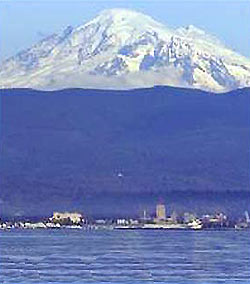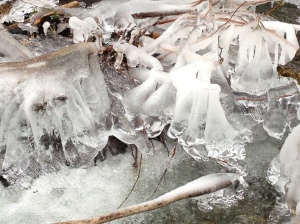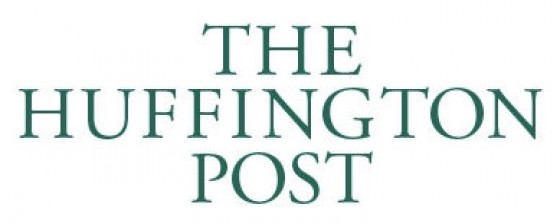Talk about one extreme to another! My last post was on the wild and wooly world of New York City, and today it’s the epic beauty of the Pacific NW, and conservation. Keeping you on your toes!
As I’ve said countless times on this blog, I am blessed to live in one of the most beautiful places on earth. We live surrounded by deep, emerald forests, lush and rich from moist rain– more a mist, than the rain others know. We enjoy the sapphire waters of the Salish Sea (Puget Sound), that sparkle like so many diamonds on a sunny day, and reflect the true fifty shades of gray, that make the 500 shades of green that much sharper. We’re fortunate to see mountains in every direction. The mighty Mount Baker, where we ski all winter and hike when the snows melt, a place where we breath deeply and sigh when we see it, looms above us to the northeast. The Canadian Coastal Range to the north, are stunning and spectacular up close or from afar. On a cold day they rise in the distance and remind me just how small I am. South and west, on a clear day we can see the Olympic Range, huge and beckoning. On the rainiest days, on the days when weather is harder to take, I look outside and I am always reminded of how lucky I am. We are blessed with abundant and royal wildlife that many see only in zoos: mountain lions, bear, bald eagles, great blue herons, coyote, fox, beaver, orca whales, and the mighty salmon. If it sounds like Eden, it is. (All places I walk, that are within minutes of my house)
Yes, the salmon. The children who grow up here are raised on the life-cycle of the Pacific salmon, starting very early. They raise small “fry” in their schools, watching them grow in tanks; they study their biology, and their rich history tied to the local tribes and the Europeans who eventually settled here; they see them released in the spring, and we all stand along the shores of our rivers and watch the grown salmon return and jump up-stream, to lay their eggs, and die. In October, we would take our kids down to the falls downtown, and watch the fish leap and fight their way up the falls, the kids sometimes helping the ones who got stuck. Then the cycle starts all over. We eat our salmon; we study them; we hold them in high esteem. Salmon in the Pacific Northwest is King. We have Coho, Sockeye, Pink, King and Chum. For a short time in early fall, we have Copper River Salmon, which actually comes from Alaska, but we live and cheer for it, for that very short time. Crowds actually form in Seattle, to see that first precious fish filleted. For real. For the record, king is my favorite. I will always choose that over any of the others.
A week ago today, the day after I got home from my big trip to New York City (read here), my feet were still hurting, and I had a singular desire to just stay home and catch up on things; but, we had made a commitment to tour the salmon recovery program in our area, with the local Whatcom Land Trust. Honestly, I wasn’t anxious to go. I was tired and not really into it. It was Big Guy’s thing, and if truth be told, I was a tad passive-aggressive about participating. It was really cold out, drizzly and gray. Nonetheless, I grabbed my hiking boots and my rubber boots (we were told to prepare for mud and water) and headed out, with our guide Craig Lee. He is the current Executive Director of the Whatcom Land Trust and one of the original founders. He was enthusiastic and welcoming, excited to show us what our donations have done, and what the program hopes to continue doing to help local salmon recover: from environmental sprawl, habitat destruction, fishing, and other things that have brought numbers down. His car was loaded with hot coffee, cocoa, tea and lots of Ewel Gibbons‘-like snacks. Think nuts, dried fruit, bananas… Not a donut in site. Exciting, I thought, as we drove off; a shot of Bailey’s might help. (In fairness, I’ve already owned the passive aggressive).
 It was, exciting. In fact, it was thrilling; it was humbling; it was invigorating and inspiring. I fell even more in love with this place I call home. I came away with an incredible appreciation for a fish I mostly eat, and I felt honored to share the day with two men who have committed their lives to the environment I benefit from every single day. We started out alone with Craig, but stopped at the far end of Lake Whatcom to pick up Eric Carabba, the Lands Director for the WLT. While Craig has clearly spent much of his career speaking up and out regarding issues of conservation and fund-raising, Eric struck me immediately as an entirely different guy. Quiet, and serious at first, he struck me right away as someone who’s spent a lot of time in the wilderness, and isn’t really comfortable seeking donors or entertaining “environmental tourists.” He struck me as savvy enough to know that those donors are needed, but his real love is being outside and working to turn around the damage, that’s been done to the places he has lived his entire life. He knows his stuff: intelligent and approachable in his knowledge. His explanations were complex, but made clear to the layman: me. Each place we went, Eric referred to places he’d been swimming since he was a boy; places he’d fished; fields that he explored and sink holes he sank into; forests that were once there but have been clear-cut, and the passion that comes from living someplace so beautiful, for your life.
It was, exciting. In fact, it was thrilling; it was humbling; it was invigorating and inspiring. I fell even more in love with this place I call home. I came away with an incredible appreciation for a fish I mostly eat, and I felt honored to share the day with two men who have committed their lives to the environment I benefit from every single day. We started out alone with Craig, but stopped at the far end of Lake Whatcom to pick up Eric Carabba, the Lands Director for the WLT. While Craig has clearly spent much of his career speaking up and out regarding issues of conservation and fund-raising, Eric struck me immediately as an entirely different guy. Quiet, and serious at first, he struck me right away as someone who’s spent a lot of time in the wilderness, and isn’t really comfortable seeking donors or entertaining “environmental tourists.” He struck me as savvy enough to know that those donors are needed, but his real love is being outside and working to turn around the damage, that’s been done to the places he has lived his entire life. He knows his stuff: intelligent and approachable in his knowledge. His explanations were complex, but made clear to the layman: me. Each place we went, Eric referred to places he’d been swimming since he was a boy; places he’d fished; fields that he explored and sink holes he sank into; forests that were once there but have been clear-cut, and the passion that comes from living someplace so beautiful, for your life.
The first creek we explored fed directly into Lake Whatcom and we got to stop and watch the pink salmon cluster under a small bridge, some of them still making their way upstream. Standing by the lakeside in the foggy mist was peaceful beyond peaceful. As we drove on, Eric and Craig showed us all of the pristine land that the Trust has acquired and will keep that way. The areas of clear-cut logging were like ugly scars on the otherwise beautiful hillsides. It was interesting to hear about the politics of that logging, and the efforts to buy and preserve “strategic” parcels. They have recently teamed up in their efforts with the Lummi and Nooksack Tribes, who have depended on salmon for all of their history here. They are all trying to rebuild habitat together, and think strategically about what lands will best achieve that goal. That was by far the most interesting piece that I came away with. It’s not about acquiring more, more, more, but about procuring land that will actually help the salmon. Finding parcels that can be used to create a patch-work quilt of sorts, with various habitats that enhance the salmon’s chances of a fuller recovery… It’s amazing what the vision is, and it was an honor to share a day experiencing the passion of that vision, and the beauty of the land they are preserving. It was promising to hear that these lands will be increasingly available to all of us: to hike, to visit, to see first hand.
The most amazing part of the day was when we got out, put on our boots, and walked upstream to see where some of the larger salmon end up. Ok, I should know all the names and do this justice, but I was carried away by the experience itself, and found it hard to keep all the statistics and details clear. My bad, but then I kept reminding myself that being out there, inhaling it all, and really noticing my surroundings, is a big piece of what preservation is about, perhaps one of the most important pieces, I believe. I support the Land Trust, so that new generations, and we all can get out there and see what I got to see during our 4.5 hrs out there. But ducking and trekking through the woods, following that stream, to see where these amazing fish have come to lay their eggs and die, was truly astounding!
The salmon swim back to where they were born, the very spot, and they lay their eggs in mounds called redds. Because of unusually warm weather this year, we were privileged to still see fairly significant numbers of fish still fighting their way through the gravel and thrashing their tails to make the redds. We could see the eggs mounded up, the fish resting in the shadows, and the bodies of fish that had already finished their life cycle. It was startlingly beautiful– art in nature. (Salmon and ice… striking to see)
The day was everything I didn’t think it would be. It was rejuvenating; it was peaceful; it brought me back down to earth, after four spectacular but frenzied days in NYC. We drank hot chocolate looking out over future forest–blue lines across old farm land, and frosty hillsides; we saw bald eagles and salmon, great blue heron and beautiful landscapes. I learned so much more than I anticipated, and I came away feeling even more in love with, and protective of, the amazing place where we live. I want my kids to really know how special the place where they grew up is. I plan to live here the rest of my life, and I want it to stay this way.
For more details about the Whatcom Land Trust and salmon conservation, read this more in-depth article in the Cascadia Weekly.
Share your thoughts in the comments. I always appreciate feedback, positive or constructive. It’s the season for giving, so show some love and hit Like. Check out Tales From the Motherland on Facebook and Twitter, and follow along.
© 2013 Please note: that all work on this page is copyrighted to Dawn Quyle Landau and Tales From the Motherland. If you care to share my work, please give proper credit. Plagiarism sucks.
Any ads at the bottom of this page are not endorsed by Tales From the Motherland. I am just not willing to pay extra to have them not appear.
And finally, I am push, push, pushing to drive up numbers. If you like my work, hit follow (in the upper right hand corner of this post) and get posts delivered to your email inbox. No other mail, just my work. Check out the TFTM Facebook page and hit Like. My goal is to see that number reach 400 this year. Help make that happen. Thanks!

























Wonderful ode to a beautiful part of the country that should be preserved. I can’t wait to visit and hike. Just curious– how do you wear hiking boots AND rubber boots at the same time? Thanks for sharing your experiences and observations- great photos too.
LikeLike
I wore my hikers for most of the day, and the rubber boots for the water ways. Brought both. You’ll love it!
LikeLike
I loved this post, Dawn. The life cycle of the salmon still amazes me and to be able to hike to the place where they begin a new cycle and end their own is simply awe inspiring. Beautiful post.
LikeLike
Thanks Cathy… come in the fall sometime and I’ll take you out there. It’s truly breathtaking and inspiring!
LikeLike
Great pictures!
LikeLike
Thanks so much, and welcome to Tales From the Motherland! Hope you’ll come by again and share your thoughts. Much appreciated.
LikeLike
I always enjoy visiting my brother in Washington state. So gorgeous out there. But unlike him, I’m not a fan of salmon, or any fish for that matter. Can’t even stomach the smell which makes it tough when we go out to a seafood restaurant in Seattle!
Love your pics. Some really lovely shots.
LikeLike
Thanks Carrie! Of course, the next time you’re out here, you must let me know and we can have lunch… not seafood! Admit it; it would be fun…. right? I promise to got easy on you!
LikeLike
I know you would. And I bet you’d put me at ease by filling in those awkward silent pauses I’m so good at. 🙂
LikeLike
Count on it. But, I promise to be gentle… I can be quiet too. 😉
LikeLike
Oh Dawn, you are singing my song. The stories and the photos from the Northwest are my lifeblood. I hope to make it back next summer. Thanks for sharing this splendiferous refresher of my homeland! – Mike
LikeLike
I thought of you a few times while writing this… I know how dear this place is to you. Happy Christmas and New Year, friend.
LikeLike
Terrific!! We’re just now seeing this. Thank you, Dawn!
LikeLike
Glad you like it! 🙂
LikeLike